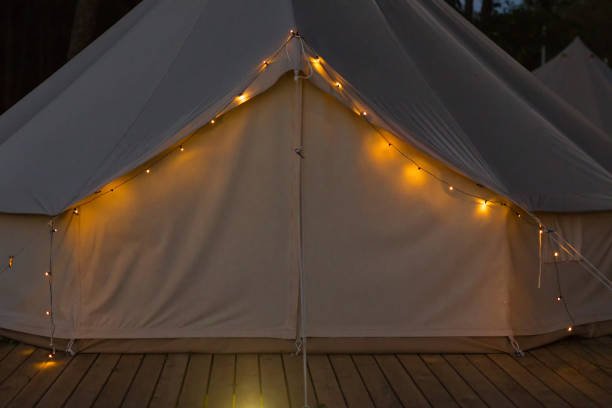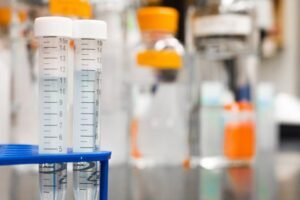Indoor gardening with grow tents and LED lights is becoming increasingly popular among home gardeners. Grow tents allow you to control the environment for your plants and provide them with optimal lighting, temperature, humidity, and airflow. LED lights are energy efficient, produce little heat, and can be customized to provide the ideal light spectrum for plant growth and development. Follow this step-by-step guide to learn how to properly set up a grow tent and LED lighting system.
Selecting a Grow Tent
When choosing a grow tent, consider the following factors:
Size
Determine how much space you need for the number of plants you want to grow. Grow tents come in many sizes from small 2x2ft tents up to 10x10ft and larger commercial sizes. Measure the space you have available and choose a tent to fit.
Material
Grow tents are typically made from vinyl, canvas, or polyester. Vinyl and polyester tents are tear-resistant and waterproof. Canvas is breathable but less durable. Choose a thick, high-quality material that will stand up to repeated use.
Frame
Look for a tent with a sturdy steel frame for maximum stability and support. The corners should have metal joiners to reinforce the structure. Check that the frame will accommodate the weight of lights, filters, and other accessories.
Height
Match the height of your tent to the mature height of the plants you want to grow. Height is also important for mounting lights and other components with sufficient overhead space.
Windows and Doors
Look for transparent viewing windows to allow you to monitor plants without disrupting the internal environment. Zippered doors allow easy access for caring for your plants.
Ventilation Ports
Proper ventilation is crucial, so choose a tent with intake vents, exhaust ports, and openings for ducting. The number and size of ports will determine the airflow capacity.

Assembling the Grow Tent
Once you have selected the right grow tent for your needs, assemble it by following these steps:
- Carefully unpack all parts and pieces from the box. Grow tents typically include the tent body, metal poles, corner connectors, and tool(s) for assembly.
- Lay out the tent body flat on the floor with the inside facing up. The inside may be white or lined with reflective Mylar film to maximize light.
- Assemble the metal poles and use the corner connectors to join them into a frame. Poles are often color-coded to match specific corner pieces.
- Lift the tent body over the frame and spread it out evenly. The tent should now take shape as the frame pushes out the sides and corners.
- Attach the tent body to the frame using hooks, loops, or velcro tabs. Make sure it is secure along the entire length of each pole.
- Place the fully assembled tent in the desired location. Ensure it is level and stable.
- Finish securing the tent material to the frame along the bottom edge.
- Zip up any doors and openings to seal the tent’s interior.
- Your tent frame and covering are now fully set up and ready for adding lights and accessories.
Installing LED Grow Lights
LED growing lights provide energy efficiency, custom spectra, and low heat output. Follow these guidelines for installing LEDs in your grow tent:
Select LED Fixtures
Choose full-spectrum LEDs designed specifically for indoor plant growth. Look for balanced light in the blue, red, and white ranges. Compare wattage, coverage area, and intensity (PPFD) when selecting models.
Determine Positioning
LED panels or bars should be placed 12 to 24 inches above the plant canopy. For seedlings and clones, start at 18 to 24 inches and lower as plants grow.
Mount Lights Above Canopy
Use ratchet hangers, adjustable ropes, or chains to suspend LEDs from the upper tent poles or cross bars. This allows you to easily raise or lower lights as needed.

Provide Adequate Light Coverage
Overlap the light pattern from multiple LED fixtures to provide even coverage across the entire grow area. Focus more intense lighting over the central canopy.
Install According to Manufacturer Guidelines
Follow directions for safely connecting LED lights and any daisy chaining of multiple units. Do not exceed voltage limits. Mount light bars or panels flat for optimal light distribution.
Control Light Cycle
Use a timer to control the light cycle. Set lights to turn on and off automatically according to the plant’s growth stage and photoperiod needs.
Adding Necessary Components
Certain accessories are necessary for maintaining a productive grow tent environment:
Exhaust System
A proper ventilation system uses ducting, exhaust fans, and passive air intakes to regulate temperature and airflow. Strategically install exhaust ports or duct openings high on the tent walls.
Grow Medium
Use containers filled with soilless mixes or inert mediums like coco coir, perlite, or clay pebbles. Arrange containers below the LED lights to allow for even growth.
Extraction Fan
Mount duct fans outside the tent with flexible ducting to the upper exhaust ports. The fan draws hot air out to maintain cool, breathable growing conditions.
Carbon Filter
A carbon filter attached to the exhaust ducting eliminates odors from escaping the tent. This maintains discretion for home growers.
Humidifier or Dehumidifier
Monitor relative humidity inside the tent and use a humidifying or dehumidifying device to keep RH within an optimal 40-60%. Improper humidity causes problems.
Temperature Monitoring
Use a hygrometer/thermometer to track temperature and humidity. Keep tent temperatures in a suitable growing range around 70-80°F (20-26°C).
Automatic Climate Control
To remove monitoring and interventions, install an automated environmental controller with sensors. They regulate fans, filtration, humidity, and more to stabilize tent conditions.
Safely Using Your Grow Tent
Always make safety a priority when operating your grow tent:
- Never overload electrical circuits. Check wattage ratings and use heavy-duty extension cords.
- Inspect all wires to avoid hazards like damaged cords or loose connections.
- Keep tents away from water sources to prevent electrical hazards or fires. Watch for dripping condensation.
- Monitor tent temperature and watch for equipment overheating. Allow space between lights and plants.
- Use circulating fans inside tents to strengthen plants and prevent disease.
- Check that all ducting is properly secured and supported so it does not sag and disconnect.
- Keep tents locked and secure to prevent access by children or animals which could damage equipment.
- Follow the manufacturer’s instructions to properly ground and/or shield LED fixtures, fans, and any electrical components.

Getting Started With Your Grow
Once your grow tent setup is complete, it’s time to begin planting! Follow these tips for getting started:
- Sanitize the entire tent and all components first to eliminate odors, pests, and mold.
- Decide on containers – smart pots, plastic nursery pots, or fabric grow bags all work well.
- Select a high-quality potting mix designed for indoor gardening. Soilless blends retain moisture but still drain well.
- Gently transplant young plants or seedlings into containers and place them in the tent under LED lights.
- Maintain ideal conditions inside the tent. Keep lights, humidity, temperature, and fans optimized as plants grow.
- Train and prune plants to maximize yields while preventing overgrowth in the small tent space.
- Flush plants by running large amounts of water through containers to prevent salt buildup in the soil.
- Be patient! Monitor plants closely but allow time for proper flowering, ripening, and curing before harvesting.
Frequently Asked Questions About Grow Tents
1. What size grow tent is best for my space?
Choose a tent size based on the available floor space in your growing area, considering the minimum overhead height needed. Measure the dimensions to find a tent that fits, allowing some space around for access.
2. How much do grow tents cost?
Basic grow tents can cost $60 to $500 depending on the size and features. High-quality commercial tents with metal construction can cost over $1000. Larger tents will cost more.
3. What yield can I expect from my tent?
Yield depends on space, lighting, strains, and your growing expertise. A 3x3ft tent with a 600W HID or 300W LED light can produce around 0.5-1 lb. A 5x5ft tent with 1000W lighting can yield 1-2 lbs.
4. What lighting should I use in my grow tent?
LED and HID lights work well for tents. Choose full spectrum LEDs or HPS/MH lights. Compare wattages and PPFD levels when selecting models to provide enough brightness.
5. How do I control humidity in my tent?
Use exhaust fans and negative pressure airflow to reduce humidity. Dehumidifiers or additional circulation fans can also lower RH. Humidifiers increase humidity when too dry.
6. What plants can I grow in a tent?
Tents are suitable for growing many veggies, herbs, flowers, and houseplants. They excel at deeply flowering cannabis plants but also work for tomatoes, peppers, lettuce, and more.
7. Where should I place my grow tent?
Find a clean, dry, and secure location with access to electrical outlets away from direct sunlight. Grow tents work perfectly in spare bedrooms, closets, garages, and basements.
8. Is it safe to put a grow tent on a carpet?
Yes, tents can safely sit on carpeted floors as long as large pieces of protective material are placed underneath. This prevents moisture damage or mold growth on the floor.
My Closing Thoughts
Setting up a productive indoor grow tent equipped with efficient LED lighting takes planning, quality components, and proper assembly. Following the steps outlined in this guide will help you build a suitable environment that supports your plants’ growth and keeps them healthy. Position ventilation, humidity, and temperature controls thoughtfully to maintain ideal conditions. Use the proper mounting and electrical equipment for safety. With a well-constructed grow space and attention to your plants, you can achieve impressive yields from your small home grow tent.












